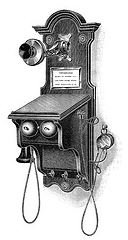Communication and Collaboration: How to Engage Others in the Workplace
Learning to effectively communicate with others is a bit harder than it sounds, but it is the biggest factor when it comes to successful collaboration and a healthy work environment. Communication is so much more than talking, though that is a big part of it. Here you’ll learn what you can do to improve your communication skills, as well as tips on things like body language, tone, and more!
Tone
The tone in your voice is a great way to help drive home the point you’re trying to make, be it a friendly greeting or a negotiation in the workplace. The most important thing is that you speak clearly, and make sure to project your voice. One of the hardest things for people to deal with is when someone mumbles or talks too quietly. If you want to be understood, take some time to enunciate your words and learn to speak in a volume that is comfortable for the person listening to you. Your tone should almost always be welcoming; there is rarely a time when a person should need to be excessively firm or–worse–intimidating or threatening. Greet all employees, supervisors, clients, and strangers as though they are friends–just make sure that if this is in the workplace, you keep it as professional as possible!
Body Language

Body language is one of the most important ways we communicate with others. While verbal communication says a lot, it’s almost arguable that we can say more with the way we carry ourselves. For example, say you’re at the bank, and you have a choice of two tellers. One looks downright angry, as she’s got her arms crossed and is scowling. The second teller has a smile on her face and her arms relaxed at her sides. You’re likely not going to want to approach the person who is scowling and crossing her arms, as this is a threatening gesture. The same goes for you! When you hold yourself around others, keep your chin up, your eyes open, and your body relaxed. Don’t slouch, as this gives the appearance of being lazy, not relaxed. Practice standing and sitting up straight in a way that is most comfortable for you. When people approach you to talk, greet them with a smile (when appropriate–obviously there are times when it is not), a firm handshake, and maintain eye contact. One of the most awkward situations you can ever be put in is to be in a conversation with someone who doesn’t make any kind of eye contact. This is generally seen as a shy or shady behavior, so make sure to keep your eyes on whomever you’re talking to!
Knowing When and How to Explain Things
One of the best things you can do for both communication and collaboration is learning when you should explain things, as well as how you should explain them. This is somewhat a tricky skill to learn, as it’s a bit of a delicate balancing act. You don’t want to assume that you have to hold a person’s hand through a project, explaining every little thing that needs to be done. Chances are, he or she might find this behavior demeaning, and you might find that you get tired of trying to explain every detail. However, on the flip side, you don’t want to assume that someone–especially someone whom you have never worked with before–is going to know exactly what needs to be done and how it needs to be done. One good way to sidestep any potential awkwardness or lapses in communication is to explain the key points of something, and then ask if the person has any questions. This allows the person the chance to ask if they don’t fully understand something and prevents you from spending all afternoon explaining how to fill out spreadsheets.
Keeping the Lines of Communication Open
What is key for the success of both communication and collaboration is knowing how to keep the lines of communication open. This requires the effort of everyone involved, but usually one person should take up the initiative and get the ball rolling. The first thing you should do? Talk to people! Talking to coworkers, employees, supervisors, and clients can make them feel more comfortable about coming to you or others when they need to. The second thing you should do? Make sure you take the time to listen to others when they approach you. Sure, occasionally this might eat up a bit of your time, but showing how much you value great communication is the key to collaborating well with others! Last, try to get people to interact with each other, rather than only with you. This is critical if you’re a team leader or employer! After all, you don’t want to get caught up being the middle man between two people who are supposed to be working together, after all!
References
- Mark Evenas Tech - Communications 101: How to Communicate Better http://www.markevanstech.com/2007/04/29/communications-101-how-to-communicate-better/
- Business Balls - Guide to Reading Body Language http://www.businessballs.com/body-language.htm
- Image: Smile is Univeral by Jesslee Cuizon Creative Commons Attribution 2.0
- Image: Téléphone by Frederic BISSON Creative Commons Attribution 2.0
